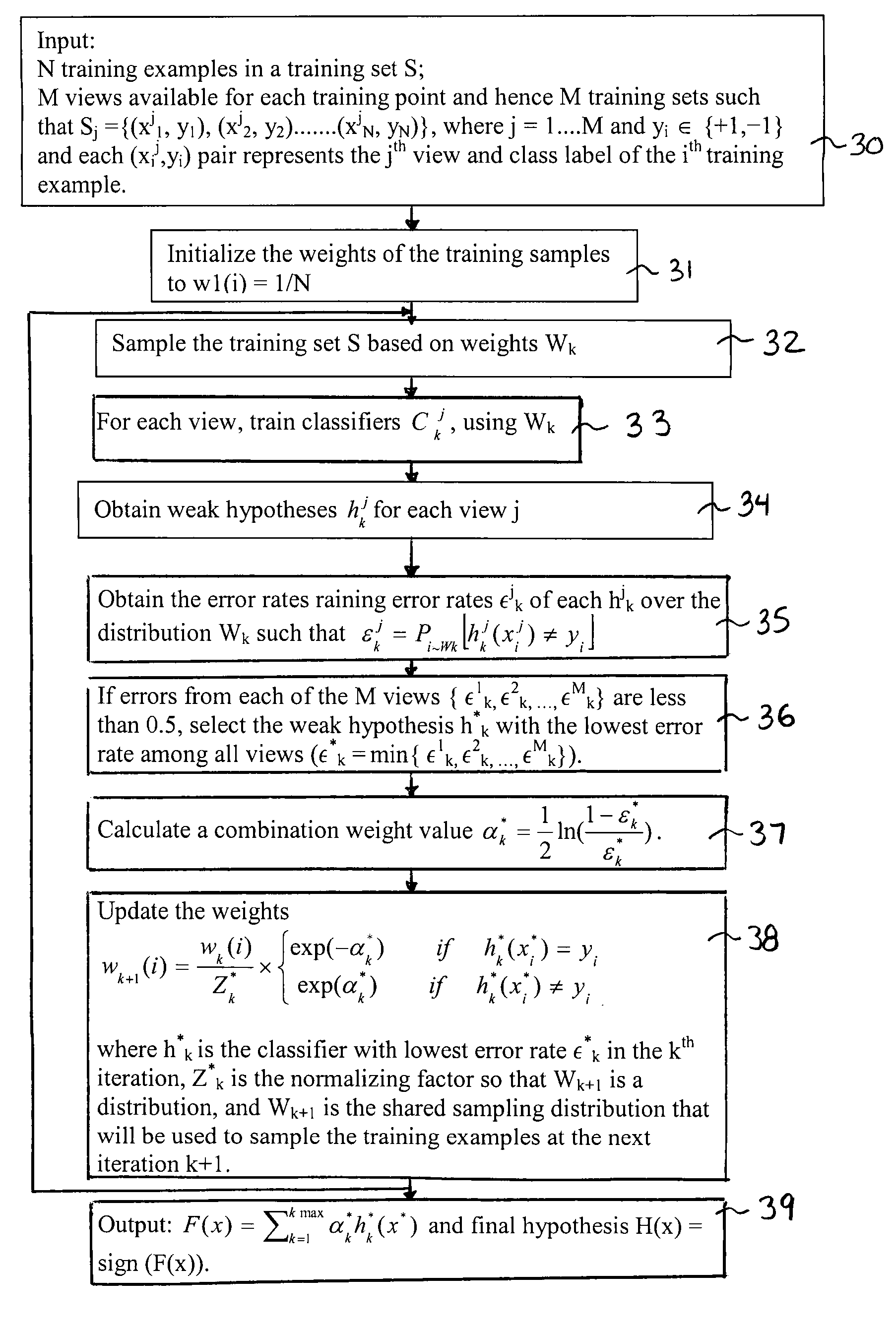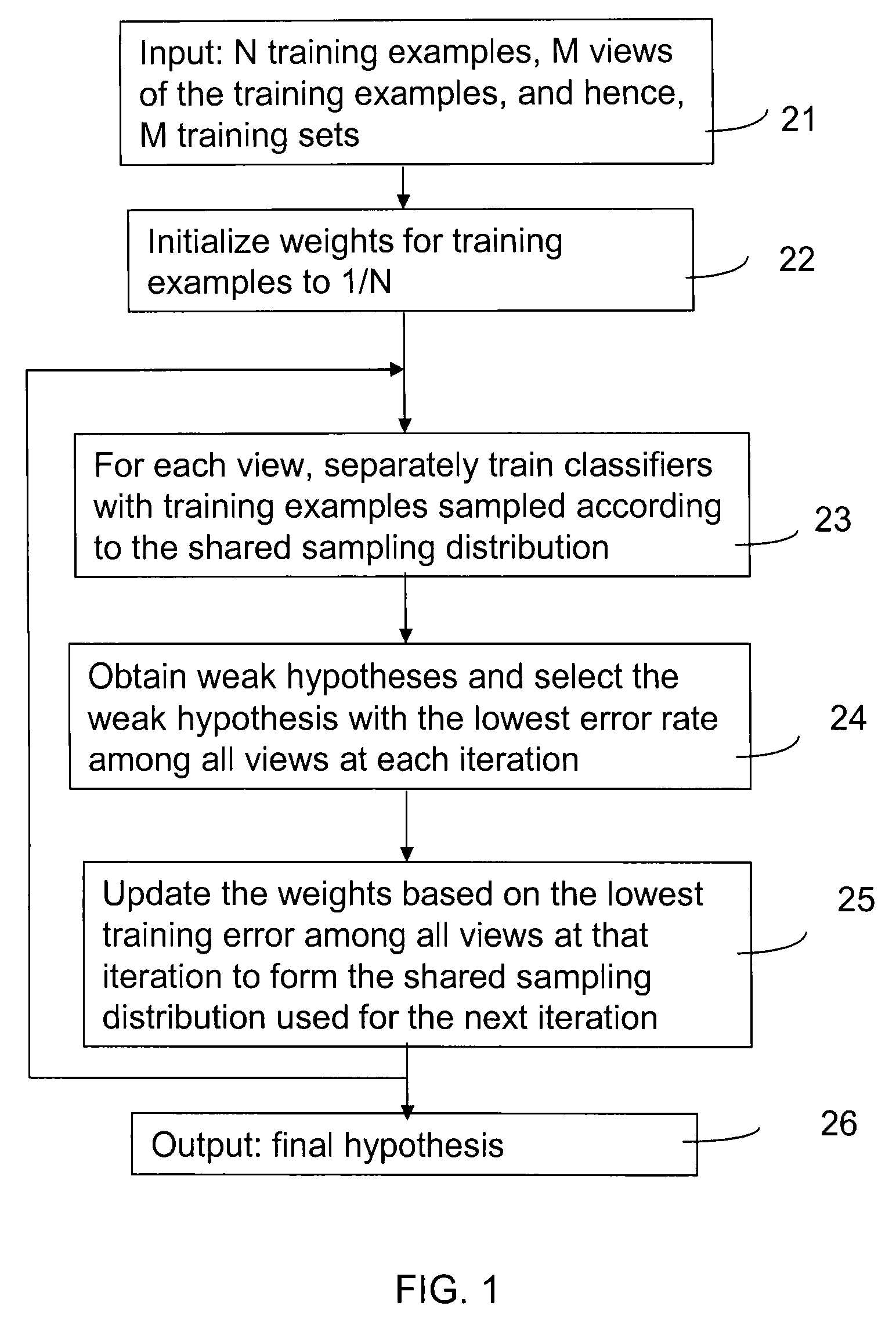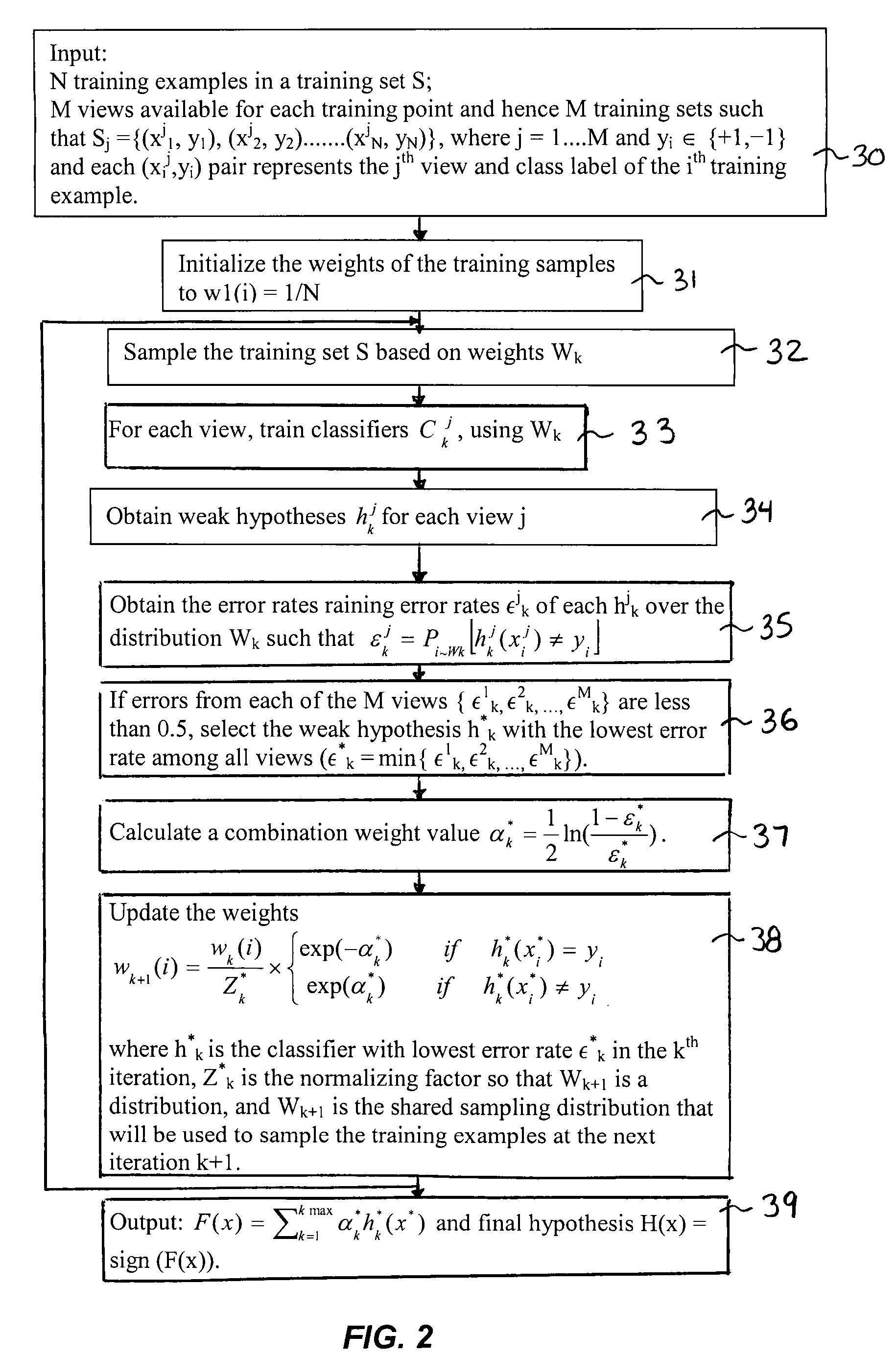System and method for fusing data from different information sources
a data fusion and information technology, applied in the field of information fusion, can solve the problems and achieve the effect of lower training and generalization error bound of the final hypothesis
- Summary
- Abstract
- Description
- Claims
- Application Information
AI Technical Summary
Benefits of technology
Problems solved by technology
Method used
Image
Examples
Embodiment Construction
[0019]Embodiments of the invention are directed to a boosting—based method for fusing a set of classifiers that performs classification using weak learners trained on different views of the training data sampled with a shared sampling distribution. The final ensemble contains learners that are trained to focus on different views of the test data. In each iteration the combination weights for the final weighting rule are obtained using the lowest training error among all views. The shared sampling weights distribution is updated based on the lowest training error among all views at that iteration. In each iteration, a weak learner is selected from the lowest training error view, resulting in a lower training and generalization error bound of the final hypothesis.
[0020]As illustrated in the embodiment of FIG. 1, input 21 includes a training set S of N training points with M disjoint features available for each point. In an initialization step 22, all the views for a given training poi...
PUM
 Login to View More
Login to View More Abstract
Description
Claims
Application Information
 Login to View More
Login to View More - R&D
- Intellectual Property
- Life Sciences
- Materials
- Tech Scout
- Unparalleled Data Quality
- Higher Quality Content
- 60% Fewer Hallucinations
Browse by: Latest US Patents, China's latest patents, Technical Efficacy Thesaurus, Application Domain, Technology Topic, Popular Technical Reports.
© 2025 PatSnap. All rights reserved.Legal|Privacy policy|Modern Slavery Act Transparency Statement|Sitemap|About US| Contact US: help@patsnap.com



